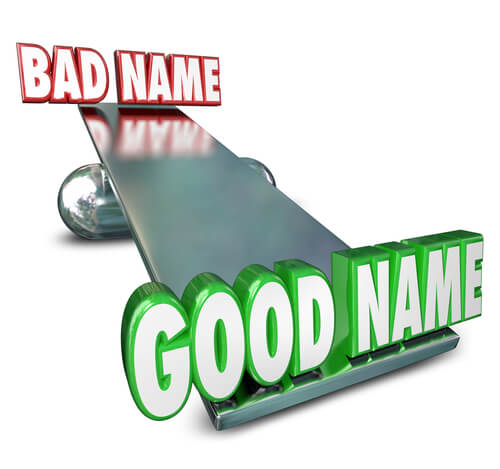Remember when you had to choose a name for your business?
You must have felt a lot of pressure. After all, your business name forms part of its identity. It influences people’s first impression of your company. And it needs to encapsulate your company’s “soul.”
You just had to find the perfect name.
That’s a pretty tall order when you may have had the vaguest idea of what products and services you would offer or who your customers would be. Or maybe you did have a clear idea when you were getting started, but since then, your company, the products and services you offer, and even your goals have changed.
Naming your business brings with it a lot of fear. You’re afraid that if you choose the wrong name and start to market, you’ll gain recognition and success—but under the wrong name. Or you’d grow tired of it, or the name would just become ill-suited to what your business had evolved to. And then, months or years down the road, you’d have to give up all the traction and reputation you’ve built. You’d have to start over from scratch. Because you’d been marketing the wrong brand.
That’s exactly what happened to my business.
When I launched Firepole Marketing in 2010, I searched for hours for a domain name I liked that was still available. When I finally settled on “Firepole Marketing,” it was just that—settling. It didn’t fit the dream I had for my company, but I decided that for then, it was good enough.
But now, five years and 60,000 subscribers later, I’m faced with the reality that the name just isn’t working anymore, and I have to change it to properly articulate what we have become and how we want to grow.
But changing your name can be like going into the witness protection program: Suddenly nobody knows who you are.
Here’s what I learned through the process, and how we avoided rebranding into obscurity.
Rebranding is About Your Audience
Your brand isn’t your name or your logo or your colors; it’s what your audience says about you and what your company means to them. So changing your brand means changing your story with your community, and including them in that story.
With Firepole Marketing, I knew we needed to change because of the conversations I’ve had with people about our name. We had gained name recognition, but it was in spite of our name, not because of it.
When people first heard about Firepole Marketing, I always had to explain away our name: No, we’re not a marketing company, and the firepole “emergency” symbol doesn’t represent what we do. So instead of helping people understand what we were all about, the name was clouding and confusing their perceptions.
When I listened to what our audience said about what we do for them, I knew we needed a name that reflected our passion for reimagining business. “Integrity,” “caring,” “true value,” “responsive,” “impact,” and “make a difference” were the most common phrases in feedback from our readers and students.
We give people a new perspective and experience in business building. Realizing that inspired our new name, a word we coined: Mirasee.
Rebrand Effectively with Context
Important news always needs more context. Big, new ideas take more time to integrate into our existing mental framework.
If you announce your rebrand out of the blue, you won’t give your audience time to see their part in the story. You need to set the stage first, and give them space to process the change and what it means for them.
I did this with a foreshadowing email on April Fool’s Day, where I joked about making “the biggest shift in our strategic direction.”
Because we were ranking so well for stripper-related keywords, the email said we would expand to products for strippers. It poked fun at our name, but it also had a grain of truth: Our name was misleading people and possibly attracting the wrong audience.
And then in the days leading up to our new brand, I sent a series of emails giving our audience a heads up on the change and telling the story of why we’re changing.
After the rebrand, even though we knew it would open the gates to naysayers, we published a blog post asking readers what they thought of the new brand.
Rebranding Can Be a Make-or-Break Moment
Rebranding after you’ve already built an audience isn’t a neutral experience. It will either erode your existing relationships, or reinforce and strengthen them.
It can make you virtually disappear, or it can add deeper layers of understanding of who you are and what you do.
On top of that, most people dislike change, so you will surely experience some backlash and criticism.
Some rebranding attempts have been disastrous. Take the case of Tropicana. After making its packaging simpler and “more down to earth,” sales tanked 20 percent, causing the company to revert to the original packaging.
But for other companies, rebranding was essential to growth.
Lucky Goldstar was a successful and growing chemical and electronics company in Asia, when it decided to expand to the international market. This prompted the company to change its name to simply LG. While still referencing its roots, it also added a new layer of meaning with its tagline, “Life’s Good.”
Ultimately, your brand should reflect the promise you deliver.
Our old name and look were no longer doing this, so rebranding was the best way to align our brand with the promise we’ve been delivering all along: Reimagining business as ethical, heartfelt, and value creating.
The words “mira” and “see” connote vision, wonder, and possibility. So “Mirasee” truly captures our company’s soul.
Have you ever had to rebrand your business? Or are you considering it? Let us know how you would minimize the repercussions of rebranding.
image credit: shutterstock
